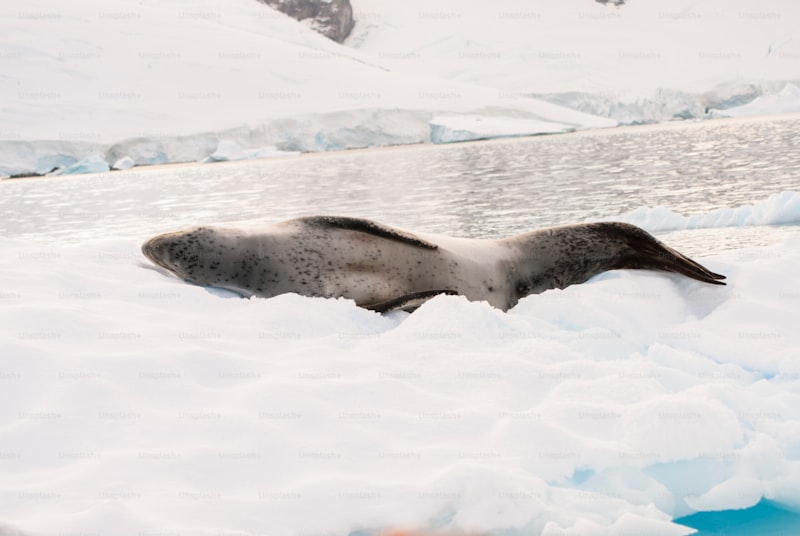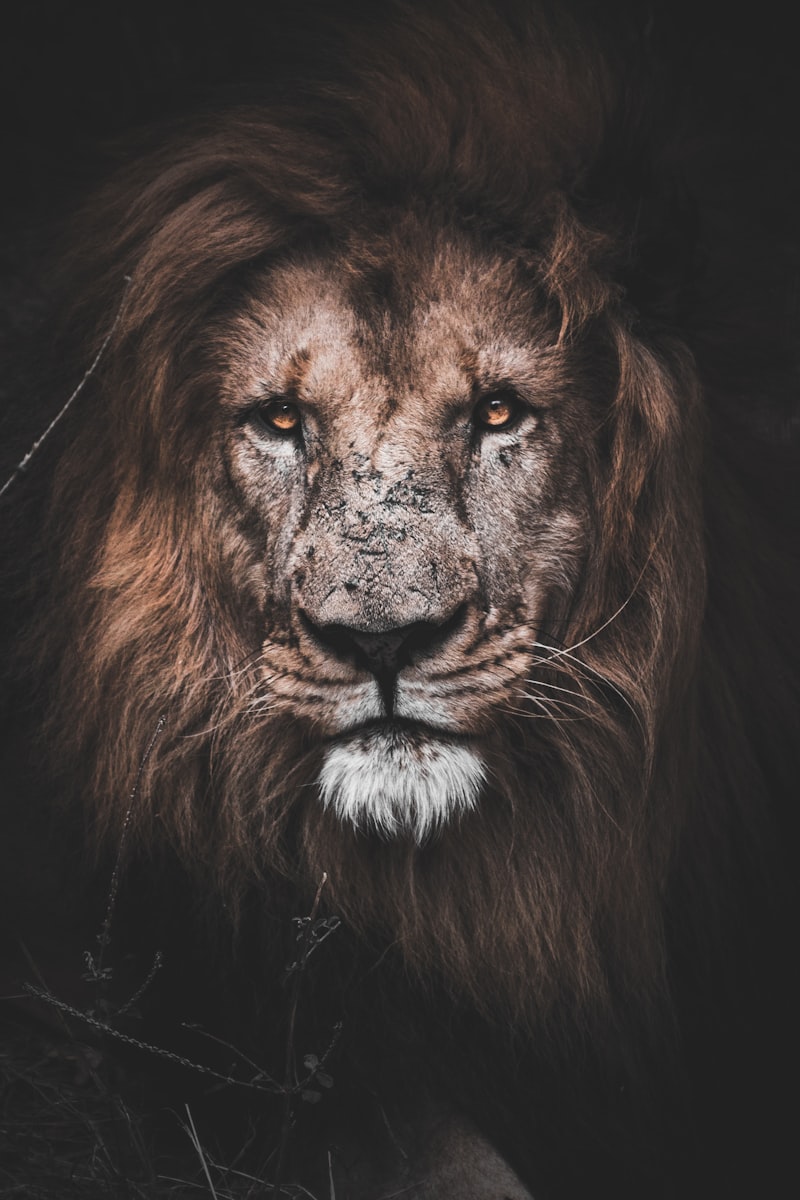Have you ever wondered how polar marine animals survive in some of the Earth’s harshest environments? The adaptations of these creatures are nothing short of miraculous. Let’s dive into the fascinating world of polar marine animals and uncover the secrets behind their survival.
In the icy waters of the Arctic and Antarctic, polar marine animals face extreme conditions year-round. From blizzards to freezing temperatures, these environments pose unique challenges. Yet, animals like polar bears, seals, and whales have evolved remarkable adaptations to thrive in these icy waters.
One of the most iconic examples is the polar bear. With its thick layer of insulating fat and dense fur, the polar bear is perfectly suited to the frigid Arctic climate. Its large, padded paws not only help it to move gracefully across ice and snow but also act like snowshoes, distributing its weight and preventing it from sinking into the snow.
Seals, another group of polar marine animals, have adapted in different ways. Species like the Weddell seal have developed the ability to dive deep beneath the ice to hunt for fish and squid. Their streamlined bodies and efficient oxygen use allow them to stay underwater for extended periods without needing to surface.
In contrast, whales such as the bowhead whale have adapted with thick layers of blubber that provide insulation against the cold. These massive creatures migrate thousands of miles between feeding and breeding grounds, relying on their adaptations to survive in both polar regions.
But perhaps one of the most incredible adaptations of all belongs to the Antarctic krill. These tiny crustaceans form the basis of the Antarctic food web, surviving in waters that often drop below freezing. Their translucent bodies help them blend into the environment, while a unique antifreeze protein prevents their blood from crystallizing in subzero temperatures.
Survival Experts: How Polar Marine Animals Adapt to Extreme Cold
Imagine plunging into icy waters where temperatures hover around freezing, yet these animals not only survive but thrive. Take the polar bear, for instance, the iconic apex predator of the Arctic. With its thick layer of blubber and dense fur, it’s perfectly suited to retain body heat in subzero temperatures. This insulation is vital for hunting seals on sea ice or enduring long swims between ice floes.
For smaller creatures like the Arctic cod, survival means adapting to the cold in different ways. These fish have proteins in their blood that act like antifreeze, preventing ice crystals from forming and causing cellular damage. This adaptation allows them to swim freely in waters that would instantly freeze human flesh.
Antarctica presents a different set of challenges, where animals like the emperor penguin have evolved incredible strategies to raise their chicks in temperatures that can drop below minus 40 degrees Celsius. Their tightly packed feathers trap air, providing insulation similar to a down jacket, while huddling together in large groups helps them conserve body heat.
Even beneath the icy surface, life flourishes. Creatures like the Antarctic krill play a crucial role in the food web, surviving in waters that reach temperatures as low as minus 2 degrees Celsius. Their transparent bodies are designed to blend in with the icy surroundings, offering them some protection from predators like whales and seals.
Secrets of Arctic Survival: The Incredible Adaptations of Polar Marine Life
Imagine diving into the frigid Arctic waters where everything seems frozen in time. Yet, beneath the surface, life teems with astonishing adaptations. Take the bowhead whale, for instance, a gentle giant capable of breaking through thick ice with its massive skull. This incredible adaptation allows it to navigate icy passages in search of food, a skill that few creatures possess.
Polar bears, the iconic kings of the Arctic, are another marvel of adaptation. With their thick fur and layers of fat, they brave the cold like no other. Their keen sense of smell can detect a seal’s breathing hole from kilometers away, ensuring they never miss a chance to hunt in this unforgiving landscape.
Not all Arctic adaptations are large-scale; some are microscopic wonders. Arctic cod, for example, have antifreeze proteins in their blood that prevent ice crystals from forming and damaging their cells. This biological marvel allows them to thrive in waters that would freeze the blood of most other fish.

But perhaps the most mysterious Arctic adaptation belongs to the narwhal, often called the unicorn of the sea. This elusive whale sports a long, spiraled tusk protruding from its head, which scientists believe is used for sensory perception and communication. This unique feature helps the narwhal navigate icy waters and locate food sources hidden beneath the frozen surface.
From Blubber to Antifreeze: Unveiling the Adaptive Wonders of Polar Animals
Imagine a world where temperatures plummet far below freezing, where icy winds cut through the air like a knife. For polar animals like the Arctic fox or the Emperor penguin, surviving in such harsh conditions isn’t just about endurance—it’s about ingenious biological solutions that have evolved over millennia.
Take, for instance, the blubber of marine mammals like seals and whales. This thick layer of fat beneath their skin serves as a natural insulator, keeping their bodies warm even in icy waters. It’s like wearing a cozy, down-filled jacket that protects them from the bone-chilling cold of the Arctic Ocean.
But what about creatures that live on land, where temperatures can drop well below zero? The Arctic hare, with its dense fur that traps air close to its body, acts like a built-in blanket, providing insulation against the freezing cold. It’s akin to wearing a fluffy winter coat that keeps them snug and warm as they hop through the snow-covered tundra.
And then there’s the Antarctic toothfish, a fish that produces antifreeze proteins in its blood. Yes, you read that right—antifreeze proteins. These proteins prevent the fish’s body fluids from freezing in sub-zero waters, allowing it to thrive in the frigid depths of the Southern Ocean where few other fish can survive.
Even smaller creatures like the Arctic woolly bear caterpillar have their own survival tricks. These caterpillars produce a natural antifreeze chemical that protects their tissues from freezing solid during the bitter Arctic winters. It’s a bit like having an invisible shield that wards off the cold, enabling them to endure even the most extreme conditions.
Masters of the Ice: How Polar Marine Creatures Thrive in Frigid Waters
Imagine the Arctic’s vast expanses, where temperatures plunge well below freezing. Here, polar bears embody the apex predators, their thick fur and layers of fat insulating them against the biting cold. These majestic creatures skillfully hunt seals, their primary prey, using stealth and patience to secure their next meal on drifting sea ice.
Beneath the surface, another marvel awaits: the elusive narwhal. Known as the “unicorn of the sea,” this Arctic whale possesses a distinctive spiral tusk, which can grow up to ten feet long. This tusk, actually an elongated tooth, aids in navigation through icy waters and plays a role in social behaviors, making the narwhal a symbol of Arctic mystery and adaptation.
Venture south to the Antarctic, where the Emperor penguin reigns supreme. These resilient birds endure some of the harshest conditions on Earth, braving temperatures as low as -40°C (-40°F). Their tightly packed feathers provide excellent insulation, while their huddling behavior helps conserve warmth during the long, dark winter months.
In the depths of Antarctic waters, the Antarctic toothfish roams, thriving in the extreme cold. This deep-sea predator has adapted to survive in temperatures near freezing, thanks to a unique biological antifreeze in its blood. It’s a testament to nature’s ingenuity in equipping creatures for survival in one of the planet’s most hostile environments.
Beyond the Chill: Exploring the Unique Adaptations of Antarctic Wildlife

Imagine a world where temperatures plummet well below freezing, where winds howl mercilessly, and where the sun disappears for months at a time. This is the Antarctic, a place where only the toughest and most adaptable creatures can call home.
Emperor penguins, those iconic symbols of endurance, exemplify Antarctic adaptation like no other. They nest on sea ice during the brutal winter months, huddling together in large groups to conserve warmth. Their feathers are not just for display; they provide a waterproof shield against the icy waters they navigate effortlessly. These birds can dive to incredible depths, hunting fish and squid in a realm where few others can survive.
Beneath the surface, Antarctic fish have evolved antifreeze proteins in their blood, allowing them to thrive in waters that would instantly freeze the blood of most other fish. These adaptations are not just biological quirks; they are essential strategies that ensure survival in an environment where even the slightest mistake could mean death.
On land, the Weddell seal reigns supreme. With a thick layer of blubber for insulation and large, expressive eyes adapted to the dim light, they navigate both icy waters and treacherous shorelines with ease. Their adaptations aren’t just physical; they include unique behaviors such as maintaining breathing holes in the ice, which allow them to stay submerged for extended periods while hunting.
Frequently Asked Questions
What physical adaptations do polar marine animals have?
Learn about the physical adaptations of polar marine animals, including specialized fur or blubber for insulation, streamlined bodies for efficient swimming, and large, flipper-like limbs for propulsion and maneuverability in icy waters.
What behavioral adaptations do polar marine animals exhibit?
Discover how polar marine animals adapt behaviorally to survive in extreme cold environments. Learn about their strategies for hunting, navigating icy waters, and maintaining social structures in harsh conditions.
What are some unique adaptations of polar marine animals?
Discover unique adaptations of polar marine animals that enable survival in extreme cold environments. Learn about specialized insulation, such as blubber and dense fur, as well as behavioral adaptations like huddling and migration patterns. Explore physiological adaptations like antifreeze proteins in blood, enabling survival in subzero temperatures.
How do polar marine animals survive extreme cold conditions?
Learn how polar marine animals survive extreme cold conditions with adaptations like thick layers of blubber and fur for insulation, countercurrent heat exchange in blood vessels to prevent heat loss, and behavioral strategies such as huddling together or migrating to warmer waters.
How do polar marine mammals stay warm in icy waters?
Learn how polar marine mammals stay warm in icy waters through specialized adaptations like thick blubber layers, dense fur, and counter-current heat exchange systems that minimize heat loss and maintain body temperature in extreme cold environments.


